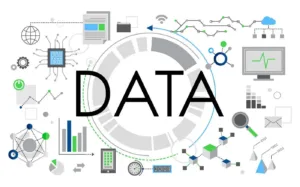Key Data Science Tools in 2024: Empowering Insights and Innovation
Data science has rapidly evolved over the past decade, and 2024 is no different. As the field continues to grow, so do the tools and technologies that empower data scientists to extract insights and build predictive models. This year, several tools stand out for their versatility, ease of use, and powerful capabilities. Here are the most important data science tools you should be aware of in 2024.

1. Python
Python remains the cornerstone of data science. Its simplicity and readability make it an ideal language for beginners, while its extensive libraries and frameworks provide the power needed for advanced users. Libraries such as NumPy, pandas, Matplotlib, and Seaborn are essential for data manipulation and visualization. Additionally, machine learning libraries like Scikit-learn and TensorFlow offer robust solutions for building predictive models.
2. R
R continues to be a preferred tool for statisticians and data analysts due to its strong statistical computing capabilities. Its rich ecosystem of packages, like ggplot2 for data visualization and dplyr for data manipulation, makes it a powerful tool for data analysis. R’s integration with RStudio, a popular integrated development environment (IDE), enhances its usability by providing a user-friendly interface and advanced features like interactive notebooks.
3. Jupyter Notebooks
Jupyter Notebooks have become the standard environment for data analysis and experimentation. They allow data scientists to create and share documents that contain live code, equations, visualizations, and narrative text. This interactive nature makes it easy to document the data science workflow, share insights with colleagues, and present findings to stakeholders.
4. Apache Spark
Apache Spark is a powerful open-source analytics engine that enables large-scale data processing. It supports various programming languages like Python, Scala, and Java, making it versatile for different use cases. Spark’s capabilities in handling big data and its built-in libraries for SQL, streaming, machine learning, and graph processing make it indispensable for data scientists working with massive datasets.
5. Tableau
Tableau remains a leading data visualization tool, known for its ability to transform complex data into easily understandable visual insights. Its drag-and-drop interface allows users to create interactive dashboards without needing extensive coding knowledge. Tableau’s integration with various data sources and its ability to handle large datasets efficiently make it a crucial tool for data-driven decision-making.
6. Power BI
Microsoft Power BI is another powerful data visualization tool that has gained significant traction in recent years. It provides robust features for data modeling, real-time analytics, and interactive dashboards. Power BI’s seamless integration with other Microsoft products like Excel and Azure enhances its appeal, especially for organizations already invested in the Microsoft ecosystem.
7. TensorFlow and PyTorch
For machine learning and deep learning tasks, TensorFlow and PyTorch are the go-to frameworks. TensorFlow, developed by Google, is known for its scalability and production-ready capabilities. PyTorch, developed by Facebook, is praised for its ease of use and flexibility, particularly in research settings. Both frameworks support a wide range of neural network architectures and provide tools for model training, evaluation, and deployment.
8. Hadoop
Despite newer technologies emerging, Hadoop remains relevant in the big data landscape. Its distributed storage and processing framework, Hadoop Distributed File System (HDFS), and its MapReduce programming model enable the handling of large volumes of data across clusters of computers. Hadoop’s ecosystem includes tools like Hive for data warehousing and Pig for scripting, which further extend its capabilities.
9. AWS, Azure, and Google Cloud
Cloud platforms like Amazon Web Services (AWS), Microsoft Azure, and Google Cloud Platform (GCP) offer comprehensive suites of tools for data science. These platforms provide scalable storage, computing power, and machine learning services. AWS’s SageMaker, Azure’s Machine Learning Studio, and GCP’s AI Platform simplify the process of building, training, and deploying machine learning models.
10. SQL
Structured Query Language (SQL) remains an essential skill for data scientists. SQL databases like MySQL, PostgreSQL, and SQLite are used for querying and managing structured data. Understanding SQL is crucial for data extraction, transformation, and loading (ETL) processes, as well as for performing complex queries and analysis on relational databases.
Conclusion
The landscape of data science tools in 2024 is both diverse and dynamic. From programming languages like Python and R to powerful frameworks like TensorFlow and PyTorch, data scientists have a plethora of tools at their disposal. Visualization tools like Tableau and Power BI, along with big data technologies like Apache Spark and Hadoop, further enhance their ability to derive insights from data. Mastering these tools is essential for any data scientist aiming to stay at the forefront of this rapidly evolving field. As technology continues to advance, staying updated with the latest tools and trends will be key to leveraging data science effectively.



